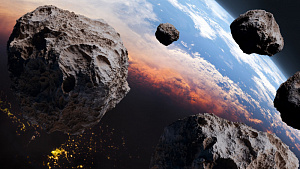Researchers from the Chinese Academy of Sciences have identified rare traces of meteorites in lunar soil samples brought back to Earth by the Chang’e-6 mission, according to a report by
CGTN, a partner of TV BRICS.
…

Researchers from the Chinese Academy of Sciences have identified rare traces of meteorites in lunar soil samples brought back to Earth by the Chang’e-6 mission, according to a report by
CGTN, a partner of TV BRICS.
…